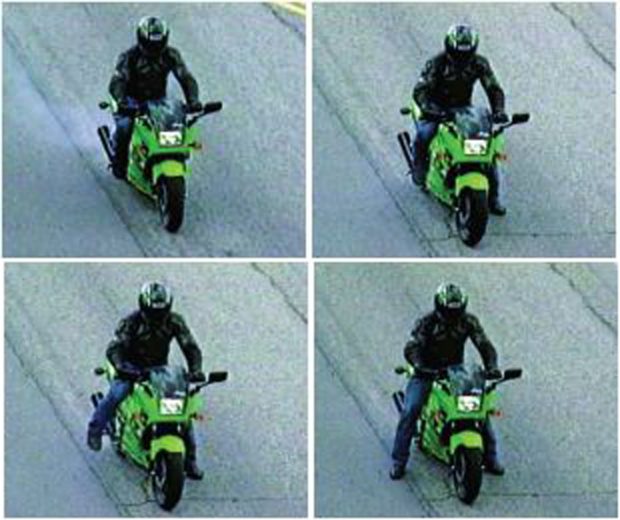Controlling Skids – Ride Safe Ride Smart
Though the first time it happens it will no doubt be alarming, a skidding tire isn’t necessarily a hazardous situation, and certainly no reason for undue panic. Knowing what actions to take will help you avoid a panic response, and allow you to correct the skid with a minimum of drama.
Rear-wheel skids are more common during sudden, maximum braking. In simplified terms, this is because during deceleration (due to braking force) much of the load on the rear wheel transfers to the front wheel, decreasing the amount of traction available to the rear tire, making it easier for the rear wheel to lose traction and stop spinning (skid). Every braking situation is unique, depending on the geometry and mass of the motorcycle involved, the road surface, the tires, and the speed. It’s difficult to recommend one ideal solution to every rear-wheel skid.

However, the key to safely recovering from a rear-wheel skid is gauging the alignment of the bike’s wheels and anticipating the effect that alignment will have if the braking dynamic is changed. As a rule of thumb, the farther out-of-line the rear wheel is relative to the front wheel, and the greater the momentum (a function of speed and mass) of the motorcycle, the more sensitive the situation is. For example, if under hard braking from highway speed the rear wheel skids and becomes substantially out-of-line (“sliding out”), then suddenly regaining traction on the rear wheel (by releasing the rear brake pedal) can have dire consequences. Upon regaining rear-wheel traction, the momentum of the now-sideways motorcycle can force it to quickly straighten up and “high-side,” or crash by falling over in the direction of the skid. Not an ideal outcome!
If you find yourself in this situation, keep the rear wheel locked(skidding) until the motorcycle has come to a complete stop. Try to relax—the rear wheel may “fish-tail” a bit while skidding, but by looking well ahead to maintain a straight-ahead path, you are likely to be able to bring the motorcycle to a stop without falling victim to a “high-side” crash.
You should only consider releasing the rear brake in the event of a rear-wheel skid at low speeds if the motorcycle is nearly upright with the front and rear wheels very nearly aligned. Front-wheel skids are a different matter. The front wheel may lock up, or skid, if the brake lever is grabbed abruptly and high braking force is applied before the front tire gains extra traction due to the load transfer from rear to front wheel. As the weight then transfers forward on a tire that has broken traction (is skidding), the front wheel “washes out” and can cause a “low-side” crash in which the motorcycle and the rider fall over together away from the direction of the skid.
In this situation, immediately release the front brake to allow the front tire to regain traction. Then reapply the front brake. Use a firm, progressive squeeze on the brake lever, applying more pressure as weight transfers to the front wheel, making more traction available. While frontand rear-wheel skids can be controlled, it is clearly better to avoid them altogether. Practice your maximum braking technique—especially on a new or unfamiliar motorcycle—in an empty parking lot or other safe area with a good road surface, and use SEE to deal with potential hazards before they cause you to skid.
For more information go to www.msf-usa.org.

